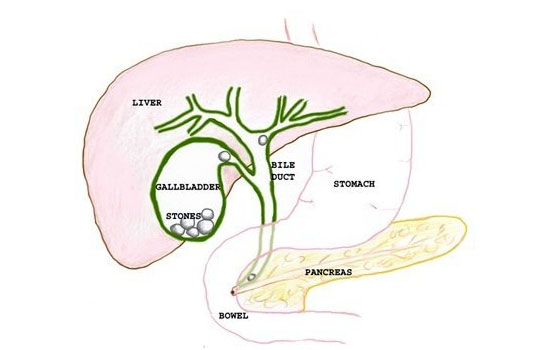
GALL BLADDER SURGERY
The Liver makes bile and excretes it into a long tube (the bile duct) that joins the first part of the bowel. Bile is a solution that helps to make fats dissolve in water (so that we can absorb them). When there is no fat in the gut, the bile is stored in the gallbladder. When we eat fat, a chemical messenger makes the gallbladder contract, squeezing bile into the gut.
Around 1 in 10 adults have gallstones. These begin as small crystals in the gallbladder and grow over time. These stones can cause irritation to the gallbladder, particularly when fat is consumed, causing pain and nausea (biliary colic).